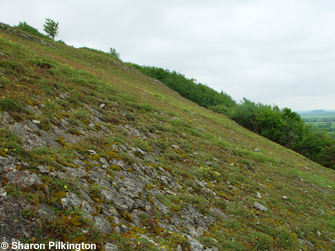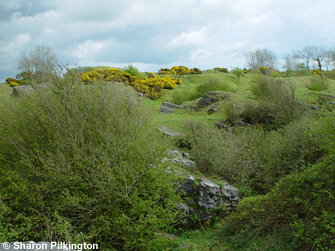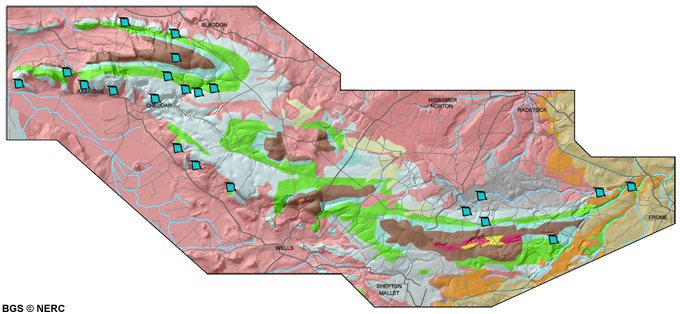
Geology and biodiversity


Vegetation communities, and the species that they support, reflect a complex interaction between a wide range of environmental variables. These frequently include soil type, structure and pH, availability of nutrients, aspect, altitude, degree and type of grazing or management, and available soil moisture.
The nature of the bedrock fundamentally influences its overlying soil, and many plant and animal species are typical of certain soils that in turn are associated with a certain underlying rock. A good example of this are the rich downland habitats typical of thin rendzina soils over chalkland in southern and eastern England.
The Mendip Hills supports a wide range of soil types, ranging from thin alkaline soils over well-drained calcareous bedrock, through more neutral to acidic silty wind-blown loessic soils on flatter ground, to well-drained acidic podzols over Devonian sandstone on the highest ground. With some minor differences, a remarkably consistent suite of species can be found wherever these soils are present in many of the wildlife sites on Mendip.
Calcicolous (lime-loving) plants are strongly associated with poor mineral soils over limestone and other strongly calcareous rocks. Shallow rendzinas and other dry calcareous soils are typically high in free calcium carbonate, usually have an alkaline pH and are very low in the major plant nutrients nitrogen and phosphorus, as well as certain other trace elements. They are also usually freely draining, and become parched in summer. This environment therefore strongly favours plants that can tolerate these conditions, and the plants are often very diminutive as a result. Typical calcicoles of unimproved Mendip limestone grasslands include salad burnet (Sanguisorba minor), fairy flax (Linum catharticum) and sheep's-fescue (Festuca ovina).

- Home
- Overview maps
- Locality
areas
- Cheddar Gorge
- Charterhouse
- Blackdown
- Burrington Combe
- Shipham & Rowberrow
- Crook Peak & Axbridge
- Banwell to Churchill
- Priddy
- Harptree & Smitham Hill
- Draycott & Westbury-sub-Mendip
- Wookey Hole & Ebbor Gorge
- Wells
- Great Elm & Vallis Vale
- Mells & the Wadbury Valley
- The Vobster area
- The Whatley area
- Torr Works & Asham Wood
- Beacon Hill
- Stoke St Michael & Oakhill
- Holwell & Nunney
- Shepton Mallet & Maesbury
- Gurney Slade & Emborough
- The Nettlebridge valley
- Geology
- Minerals and mines
- Quarrying
- Caves and karst
- Biodiversity
- Detailed site information
- Acknowledgements
- External links
- Search
- Site map